From Dumpster to Handbag: The Works of Michael Salter
I’ve long been a fan of Michael Salter‘s work, although I didn’t know who he was until somewhat recently. I first encountered his art on the side of a dumpster a few years ago, and was immediately enamored by it. Seeing such simple yet beautiful iconography over a unusual medium was moving and thought provoking.
A few weeks ago when my sister was in town for a visit we decided to stop by Holly Aiken‘s store. Like so many others that see Holly’s stuff for the first time, she was absolutely enthralled. In wandering around, I noticed some of the bags carried the icons that I had come to know on the dumpster near where I live. It was part of CAHOOTS, a collaboration involving artists Michael Salter and Paul Friedrich.
Michael is a part of Team Lump, a loose group of artist that collaborate on a number of projects. He was a part of it from the beginning, and helped form the identity of the gallery (my personal favorite among all the ones downtown). His studio was located there for 9 years before moving it to his home on Tower Street.
Four years ago he relocated to the West Coast to accept a position with the University of Oregon as an Associate Professor of Digital Arts. An artist in residence in Portland, he is represented by Jeff Bailey Gallery in New York and Think.21 Gallery in Brussels.
One of his most unique creations is that of giant styrofoam robots. Above is a time lapse video of a twenty foot tall robot being assembled at the San Jose Museum of Art. He is currently working on an aluminum-cast robot for the Basel Switzerland Art Fair, VOLTA5.
People buy so much. Every time something ships there’s a piece of Styrofoam to keep it safe and sound. I really look at these pieces as being mechanical and robot in nature. The result is a pretty poignant statement about what we buy … and what we throw away.
When asked about his connection to Raleigh and the people within, he shared the following:
I miss many people whom I was very close to in my early years developing as an artist. Many of these people are artists and designers themselves. There was more than one Sunday when we would occupy a table for 20 at Humble Pie for brunch, fond memories.
Let me remind those who own my work in the area that those early indications of support were essential to putting on a pretty enjoyable professional trajectory.
Trying to pin down Michael’s inspiration for his iconography and minimalist pieces is a far more difficult task, however. He provided a much-abbreviated version of what drives some of his creations:
If you walk down the soda aisle of a Food Lion you can see the language that moves me. If you drive up Capital Blvd you can see my inspirations. If you go the the fairgrounds Flea Market and buy some socks and a fake leather cell phone case, you know where I come from.
The drive to create art from found objects and inexpensive retail items isn’t just limited to his own work. He had his students create projects found at a dollar store, for a project aptly named Dollar Store Hack:
In an effort to investigate design and push creative methodologies we hacked existing dollar store items, designing, sketching and building a variety of personal and home goods. All our materials were acquired at the dollar store. Our goal was simple; design by hacking cheaply made plastic junk, and hopefully, manipulating some irony and employing some criticality in an otherwise humorless and often anonymous world of product.
Although the vast majority of Michael’s work in Raleigh resides within private residences, there are a few artifacts within public view. One such example is the hanging kinetic sculpture on Tower Street above.
He has a dog named Dolce, misses the early Spring of North Carolina, and was most recently published in the book Best New York Art, 2008.
More information:

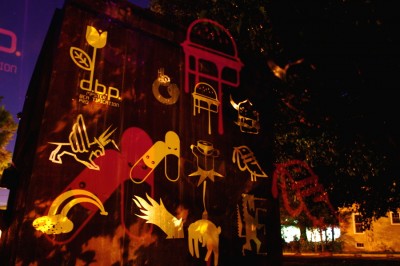
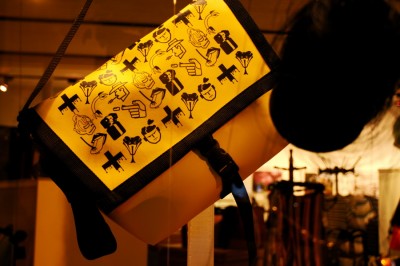
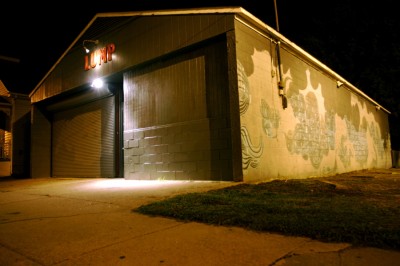

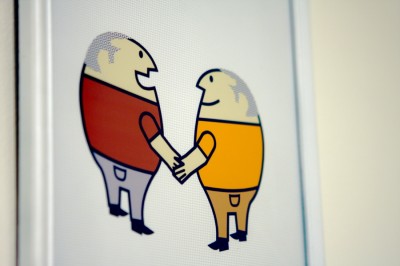
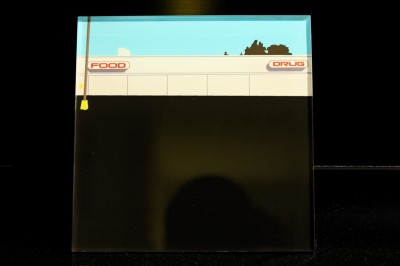
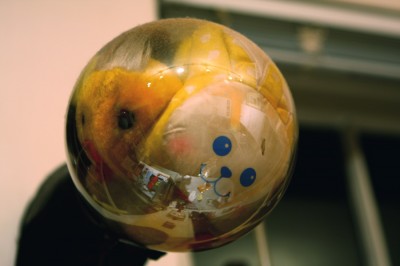
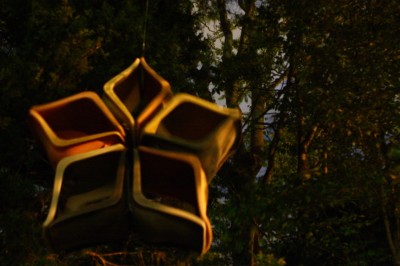
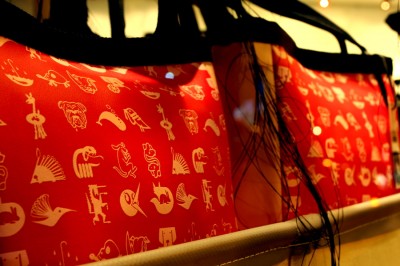
 Sign up for the Newsletter
Sign up for the Newsletter